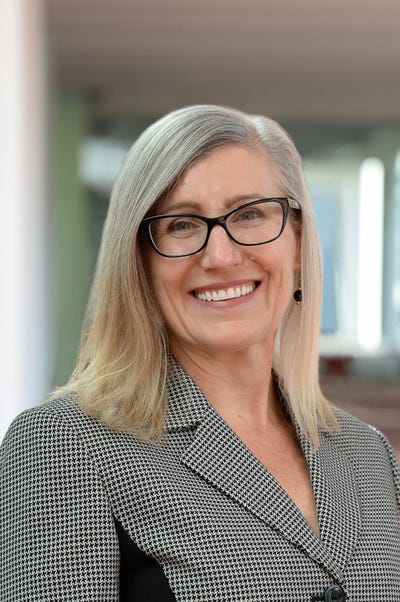Women in Nutraceuticals (WIN) was created to support gender equity across the supplements industry.

At a Glance
- Inclusive teams make better business decisions up to 87% of the time.
- Women drive 70-80% of all consumer purchasing decisions.
- Fewer than 3 in 10 CEOs are women.
[Editor's note: For the complete toolbox to savvy business decisions for formulators, marketers and executives around women and children's supplements, download the free "Women & Children First" digital magazine here.]
Gender-friendly policies are people-friendly policies. When we discuss topics such as flexible work hours, telecommuting, job sharing, expanded family leave, formalized management development pathways … these are all policies that contribute to greater employee satisfaction, engaged teams and creative thinking.
UNICEF has noted that access to child care and family-friendly early childhood development policies can not only reduce gender imbalances and promote greater co-responsibility between women and men, but the organization has further found this benefits economic growth and gross domestic product (GDP).
When we come to the company level, Cloverpop has reported that inclusive teams make better business decisions up to 87% of the time, and that teams with less diversity are more likely to make poor choices for their companies. Companies can take multiple steps to make their companies more people-friendly; for example, PlayPlay suggests mirroring Etsy’s extended paid gender-blind parental leave, or looking at Accenture’s structured training in multiple areas to support the pipeline.
As we look at the consumer base, Forbes has reported that women drive 70-80% of all consumer purchasing decisions, through a combination of their buying power and influence. As the primary caregivers for children and the elderly in most of the world, they buy on behalf of those who live in their households. Further, McKinsey has noted that women account for 80% of purchasing decisions in the health care industry.
With nutraceuticals sitting at the intersection of food and pharma, tremendous opportunity exists for this industry to explore how to factor women into every part of the supply chain—from ingredient sourcing to manufacturing, product development and research into marketing and go-to-market strategies. Unfortunately, in the broader health and nutrition industry, the perception of representation of gender diversity has been that the industry is primarily male.
The beginnings of WIN
Women In Nutraceuticals (WIN) was founded in 2022 by a group of industry colleagues who saw a need and opportunity to support gender equity across the nutraceuticals space. WIN’s vision is to achieve economic and societal equity to change the global nutraceutical industry; our mission is to do this by empowering women to unlock their personal and professional potential.
However, this is not only a “women’s organization.” Men are not only welcome but encouraged to be a part of the group. Only together can we bring more women into senior leadership, gain funding for women-led and -owned businesses, and see more women in science and research in female populations.
Obviously, perception is not reality, so it’s important to operate from an understanding of the current landscape when setting goals and key performance indicators (KPIs) for the future. To that end, WIN focused first on the issue of gender equity in leadership in the industry, and engaged NEXT Data & Insights to conduct a global survey establishing benchmarks that could be used to track shifts in gender representation. Some of our findings include:
• Women are underrepresented in leadership in the nutraceuticals industry. Fewer than 3 in 10 CEOs are women, and women hold fewer than 4 out of 10 leadership positions.
• North America and Europe have the most significant improvement opportunity in strengthening women’s presence at the board of directors’ level. Currently, 1 in 5 of those positions are filled by women.
• Women of color face additional challenges, as 70% of women at the board and senior leadership levels are white; this increases to 90% among female founders.
• The nutraceuticals industry needs to improve the collection of demographic and diversity information within companies to track women’s roles more accurately.
Respondents also shared insights around programs at their own organizations that have had a positive impact on gender representation, including equal pay, developing internal company networks and sponsorship programs, and setting clear targets for levels of representation—and being publicly accountable around them.
At the same time, others brought out concerns related to programs that hadn’t been successful—perhaps a need for more training or the lack of flexible work schedules. In addition, some respondents noted that they didn’t see any concerns around gender diversity and questioned the need to focus on the topic instead of simply finding the most qualified person for any given role. While qualifications are nonnegotiable, awareness of unconscious bias, developing training programs and expanding the hiring pool can empower companies to commit to developing more inclusive workplaces.
Interestingly, research has shown that one of the most effective ways to support women in leadership roles is to develop more gender-balanced teams, in which the leader is prototypical of the team.
On the horizon
So, what lies ahead for gender equity in the nutraceutical industry? While the industry is growing at a steady pace, focusing on bringing in diverse viewpoints and talents could accelerate business growth, creating more opportunity for everyone. From WIN’s perspective, a volunteer-run organization, we’re developing more ways for members to get involved in everything from a mentoring pilot program, to creating toolkits for seeking financial investment, and streamlining programming that serves different demographic needs.
And what could this look like in several years? Imagine a nutraceutical industry where gender parity is in place at the product development bench, with a diverse team bringing their own personal and professional experiences and insights to develop unique solutions for myriad health issues. Or where the leadership team and workforce are reflective of the broader health and nutrition community, offering new perspectives that accelerate industry growth, ultimately enhancing consumer well-being. Ultimately, we #WINtogether.
About the Author(s)
You May Also Like






.png?width=800&auto=webp&quality=80&disable=upscale)